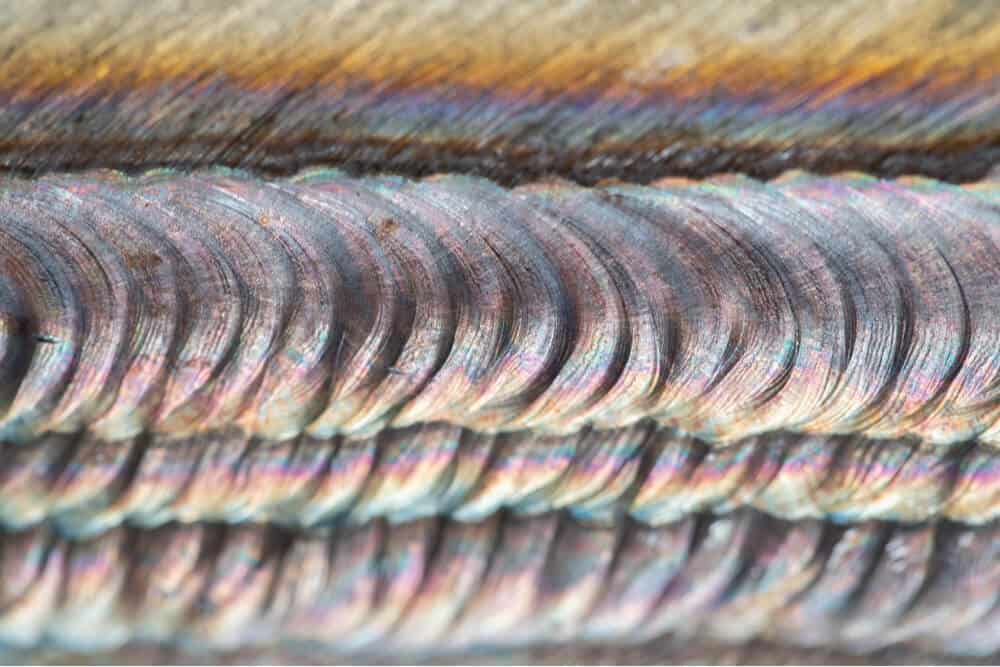Understanding the Use of Eddy Current for Weld Inspection

Welds are a critical element in too many large scale infrastructure, manufacturing, and transportation projects to be easily listed. Marine shipping hulls, the steel supports for buildings, oil storage tanks, and the steam turbines that generate power in both fossil and nuclear power plants are just a few of the areas where welds can be found and should illustrate how vital quality welds are for the safety and daily functioning of modern society. Weld inspections are critical in all of these roles and more.
The nondestructive testing (NDT) of welds allows a greater degree of certainty that welding meets the specified quality standards needed for the safety of these projects. One of the more useful forms of NDT developed is eddy current testing (ECT) where a magnetic field from a coil is induced into a conductive material—like metals—where anomalies in the material create changes to the “eddy currents.” The way the current’s flow is disrupted can reveal the presence of flaws that would otherwise be too small to detect.
An advanced ECT technique for weld inspection, eddy current array (ECA) for weld inspection makes it possible to detect small cracks, inclusions, and other flaws that are unlikely to be detected in other ways. This allows for a greater level of assurance in the quality and reliability of the welds that quite literally hold the world together.
Welding NDT Inspection Methodologies
Given how important the integrity of welds are for so many large scale projects, it should come as no surprise that there are several different types of nondestructive testing that are used in weld inspections.
Aside from ECT, some common welding inspection NDT types are:
- Liquid Penetrant Testing (LPT): the use of a dye to test for surface defects like cracking and pinholes
- Magnetic Particle Testing (MPT): the deliberate magnetization of a conductive material so that defects in the material will draw magnetic particles
- Ultrasonic Testing (UT): the use of high-frequency sound waves to generate images of the weld and visualize any discontinuities and flaws in the weld
- Radiological Testing (RT): the use of radioactive materials—usually x-rays—to penetrate the weld’s surface and create an image of the substrate and any incongruities therein
Each of these testing methods has its strengths and weaknesses. LPT is inexpensive and can be used almost anywhere. Its drawback is that it only works on uncoated, clean, and dry surfaces. MPT is quick but shares the same disadvantage as LPT. Both types of NDT are only capable of detecting flaws that break the surface of the weld and any potential flaws that are deeper often remain undetected. UT and RT are capable of detecting subsurface cracks or flaws. However, UT weld inspections can be time-consuming with the angles of soundwaves needing multiple passes to cover the whole width and surface. Radiological testing can be even more time-consuming, as radiation hazards mean that shielding and additional care must be used in testing. Neither is easily adaptable to deal with complex geometries and it is dependent on the skill of the operator to cover unusual angles or surfaces.
In all cases, including ECT, weld inspection NDT suffers from the disadvantage of being heavily dependent on the skill of the technician conducting the testing. If the operator skips a step or isn’t meticulous, flaws can go undetected. However, eddy current array for weld inspection has advantages that give it an edge in inspecting welds while in service.
The Advantages of Eddy Current Array for Weld Inspection
Eddy current array for weld inspection has the advantages of flexibility and speed. The raised crown of the weld and the irregular surface of most welds would require multiple passes with a UT probe to encompass the crown, the surface, and the heat-affected zone on both sides. Complex geometries do pose a challenge in using eddy current for weld inspection, but it is relatively simple to produce a flexible eddy current array probe that encompasses all these zones. This allows for improved analysis of the weld and flaws in the irregular surface. Eddy current array for weld inspection can also be used to inspect welds in a wide variety of surface conditions.
| See our webinar to learn more about the flexible approach to eddy current inspection. |
When it comes to eddy current testing vs magnetic particle testing eddy current can be used when surfaces are wet or coated when MPT cannot. This makes ECT an excellent method for routine testing of welds while they are in service, addressing any concerns of cracking due to fatigue. Welds in aviation, the oil industry, and in a number of other applications are all subject to extreme stresses over their operation that can cause metal fatigue and begin surface cracking of welds. Eddy current array for weld inspection of in-service weldments can detect surface-breaking cracks as small as .05 millimeters without extensive surface cleaning and preparation. Using eddy current array for weld inspection can provide a means of detecting fatigue cracks before they propagate.
Eddy current testing excels in the inspection of welds that are subject to cyclical loading that can generate cracks. This definition covers many of the welds used in infrastructure and airframes where a sudden expansion of cracks would most likely lead to catastrophic failure, loss of life, and environmental contamination. Solutions like eddy current array testing for weld inspection are one of the best methodologies for ensuring the integrity and safety of these high-value and highly critical assets. These inspections are best performed with a rugged and portable eddy current array instrument that can be easily used in the field environments where many of these welds perform.
Zetec is a leading provider of portable, intuitive, and rugged instruments for UT and ECT NDT. Contact Zetec to learn more about our eddy for weld inspection instruments and probes.





